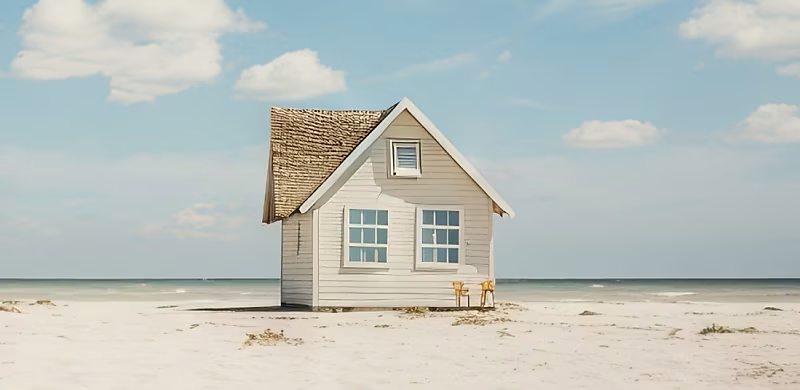The number of properties sold in April 2018 across New Zealand increased by 6.6% compared to the same time last year, according to the latest data from the Real Estate Institute of New Zealand (REINZ)

Some 6,368 houses were sold across the country in comparison to 5,973 in April 2017, marking the highest year-on-year increase in the real estate industry in 23 months.
However, the number of properties sold in New Zealand excluding Auckland increased by 8.4% year-on-year (from 4,163 in April 2017 to 4,514 in April 2018) due to the sales increase in the Auckland market being a more moderate 2.4% increase (from 1,810 sales in April 2017 to 1,854 house sales in April 2018).
Regions with the largest increase in sales year-on-year were:
- West Coast – up 50.0% from 22 sales to 33 – the highest number of sales for the month of April in 5 years
- Southland – up 36.1% from 119 sales to 162
- Marlborough – up 30.8% from 65 sales to 85
- Nelson – up 30.1% from 73 sales to 95
- Manawatu/Wanganui – up 22.7% from 326 sales to 400.
“The last time there was an annual increase in the number of properties sold that was this strong, was in May 2016,” REINZ Chief Executive Bindi Norwell observes.
“It’s a pleasing result for the industry that we’ve had 3 out of 4 months of 2018 seeing positive year-on-year volume increases suggesting that the market is in a good position.
“Across the country, 12 out of 16 regions saw a year-on-year increase in the number of properties sold, with 7 of those regions experiencing double digit growth highlighting what a strong month April was.
The only regions not to see an annual increase were Gisborne, Taranaki, Wellington and Otago – this is likely down to the fact that all four regions saw a decrease in the availability of listings rather than being a result of a subdued market,” continues Norwell.
House prices climb
The median house price for New Zealand rose 1.9% in April 2018 to $550,000 up from $540,000 in April 2017 and median prices for New Zealand excluding Auckland increased by 5.7% year-on-year to $460,000 – the exact same figure as the previous month.
Median prices for Auckland decreased marginally by 0.6% to $850,000 (down from $855,000 in April 2017).
The REINZ HPI which factors in changes within the property mix (e.g. price bands and house size), saw an increase of 0.9% year-on-year for Auckland, showing that prices are holding up in the region.
April also saw three regions achieve record prices:
- Manawatu/Wanganui – up 19.4% to $305,000 (up from $255,500)
- Nelson – up 15.8% to $550,000 (up from $475,000)
- Otago – up 19.5% to $460,000 (up from $385,000).
Other regions that saw strong increases in price during March were Southland (up 19.0% to $250,000), Gisborne (up 14.3% to $320,000) and Hawke’s Bay (up 12.0% to $431,250).
“Prices increased in 14 out of 16 regions across New Zealand showing the continued demand for good properties particularly as listings continue to remain low in many parts of the country,” Norwell says.
“The only exceptions to the price increases were Auckland and Canterbury – down 0.6 and 0.9% respectively – but these are only very small decreases and actually suggest that these markets have stabilised now.”
She believes the price breakdown for the Auckland markets explains why the region experienced a decrease in median price.
“The number of properties sold for between $250k to $750k increased and the number of properties sold in the $750k and above brackets fell, thereby, bringing the overall median price down.
“This is why it’s so important to look at the REINZ HPI in order to get a true understanding of what is actually happening in the market,” Norwell says.
She says it’s “positive” to see more sales in the more affordable price brackets.
“We welcome the Minister of Housing’s comments earlier this week which outlined that the building programme for KiwiBuild ‘kicks in when the $2 billion Budget appropriation takes place on Budget day’ next week and that the government ‘would build 16,000 homes in the first three years of the KiwiBuild programme’.
“The KiwiBuild programme will make a significant difference to housing affordability around the country, but these homes need to be built as quickly as possible to help first home buyers and those on low incomes to be able to get a foot on the property ladder.”
REINZ House Price Index
The REINZ House Price Index (HPI) for New Zealand, which measures the changing value of property in the market, increased 3.8% year-on-year to 2,706.
The HPI for New Zealand excluding Auckland increased 6.6% from April 2017 which equals the record high set last month of 2,546.
The REINZ HPI showed that 11 out of 12 regions experienced an increase in their HPI over the past 12 months, highlighting the continued strength of the property market.
The only region not to experience an increase was Canterbury, which experienced a minor decrease of 0.3% year-on-year – nothing for the region to be concerned about.
The Gisborne/Hawke’s Bay region again had the highest annual growth rate at +14.7%, again followed by Manawatu/Wanganui in second place (+12.7%) and Southland in third place (+11.4%) highlighting the strength of these regions.
Days to sell
The median number of days to sell a property nationally increased by 2 days from 34 days in April 2017 to 36 days in April 2018.
This is 2 days more to sell a property than it took in March this year.
Auckland saw the median days to sell a property increase by 2 days to 37 (up from 35 in April 2017) and the same number of days as in March 2018.
Regions with the biggest decrease in the median number of days to sell were West Coast (-68 – the lowest number of days to sell for the month of April for 5 years), Taranaki (-6 days) and Bay of Plenty (-2 days).
Regions with the biggest increase in the median number of days to sell were Gisborne (+11 days), Marlborough and Southland (both +8 days) and Manawatu/Wanganui (+6 days).
Auctions
Auctions were used in 13.2% of all sales across the country in April, with 843 properties selling under the hammer – down from April 2017, when 17.3% of properties were sold via auction showing that auctions are becoming a less popular method of sale across the country.
For the third month in a row, Gisborne had the highest percentage of auctions across the country with more than half of all properties (57.6%) in the region sold under the hammer, followed by Auckland on 23.5% and the Bay of Plenty on 14.5%.
In Auckland, 436 properties (23.5%) were sold by auction in April 2018 compared to 559 properties (30.9%) in April 2017.
Inventory
The number of properties available for sale nationally increased by a marginal 1.1% (from 25,988 to 26,269) compared to 12 months ago.
This figure was again buoyed by inventory increases in Nelson (+19.9% – an additional 74 properties – the largest annual inventory growth since January 2009), Waikato (+9.2% – an additional 161 properties, the exact same increase as last month) and Canterbury (+8.2% – an additional 306 properties).
The New Zealand excluding Auckland inventory level fell by 0.5% from 17,061 in April 2017 to 16,975 in April 2018. However, Auckland’s annual inventory increase of 4.1% is the lowest annual increase since October 2016.
Regions with the biggest falls in inventory were:
- Southland – down 16.2%
- Marlborough – down 11.9%
- West Coast – down 11.7%
- Manawatu/Wanganui – down 10.8%.
Highlighting the lack of inventory across the country, the Wellington region still has the lowest level of inventory across the whole country with only 8 weeks’ inventory available to those looking to purchase in the area.
The Hawke’s Bay again only has 9 weeks’ inventory; however, this is the first positive annual inventory change since July 2014.
Price Bands
Between April 2017 and April 2018, the number of homes sold for less than $500,000 across New Zealand fell from 44.6% of the market (2,664 properties) to 43.1% of the market (2,747 properties) which is reflected by the overall increasing median price.
The number of properties sold in the $500,000 to $750,000 bracket increased from 26.9% in April 2017 to 28.3% in April 2018.
At the top end of the market, houses sold for more than $1 million decreased from 14.2% of the market in April 2017 to 13.8% of the market this year.



